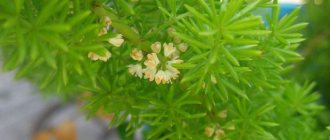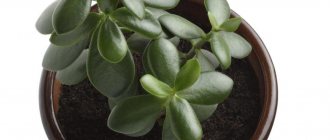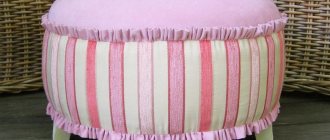Eustoma will decorate your garden
Eustoma is native to the southern United States of America. In the wild, the plant comes in only blue and purple colors and is called prairie bellflower. Japanese breeders have created very beautiful hybrids of various shapes and colors.
Low-growing varieties and hybrids have a height of only 15 - 20 centimeters, tall ones reach one meter. Eustomas with a rim and terry hybrids are very popular.
Irish rose in the garden
In order for the flower to bloom in July, you will have to sow the seeds in December , the growing season is up to six months.
In order for the plant to be more bushy, it must be pinched. This procedure will allow you to get up to 20 inflorescences on one root.
Species characteristics are preserved when using seeds collected from your plants over many years, so don’t be afraid to experiment - create a bank of planting material for your garden.
Varieties
Low-growing varieties of Eustoma include:
- Eustoma Riddle is a low compact bush, reaching 20 cm in height. Blooms profusely with double light blue flowers.
- The Mermaid variety is a miniature compact species of Lisianthus, the crown height of which does not exceed 15 cm. It does not require pinching. This hybrid blooms with simple flowers with a diameter of up to 6 cm in a variety of shades: white, light pink, lilac and blue.
- Little Bell is a densely branching bush of miniature size, reaching a height of 15 cm. The flowers are small, simple, funnel-shaped, of all kinds of colors. This variety is valued for its abundant, long-lasting flowering. You don't have to do pinching.
- Eustoma Fidelity is a low indoor plant, no higher than 20 cm in height. It is distinguished by a multitude of snow-white small flowers, which are arranged in a spiral on the flower arrow.
- Variety Tenderness is a beautiful bush with an elegant stem up to 20 cm, on which satiny petals are arranged in a spiral. Blooms with pink flowers.
- The Little Mermaid has very small bushes, up to 15 cm in height, blooming with white, light blue or pink flowers.
- Eustoma "Florida Blue" - characterized by abundant blue flowers.
- Variety Florida Pink - this very beautiful, low indoor flower blooms profusely with light pink flowers. In a pot it looks like a bouquet with wonderful miniature roses.
This may be interesting: Pachistachis - recommendations for care and reproduction at home
Little Bell Mermaid The Little Mermaid Fidelity Florida Blue Florida Pink
In addition to low-growing ones, flower growers also practice growing tall indoor Eustomas:
- Eustoma Cinderella - bush height up to 50 cm. Blooms with double flowers of delicate pink or yellow color.
- Variety Twinkie - stem height is not higher than half a meter. It blooms with white, yellow, pink or purple flowers of extraordinary beauty.
- Eustoma "Mariachi Lime" - the height of the bush reaches a meter. The flowers on it are double lime-colored.
- Echo is a medium bush, grows up to 70 cm in height. Flowers of pink, yellow, lilac or white are displayed on a strong stem.
Twinks Mariachi Lime Echo
The most popular Eustoma varieties for growing at home are large-flowered. Their inflorescences consist of many large beautiful skirt-shaped flowers of the most impossible colors: snow-white and purple-red, violet and lilac, lilac and light yellow, blue and light blue.
Growing
Reproduction
- The miracle flower reproduces only by seeds.
- Dividing the bush is not permissible; the plant simply will not tolerate it. Seeds can be purchased at flower centers or ordered online.
- Dried seeds are quite expensive, but this plant is also exclusive.
- If you manage to preserve the plant after a year of cultivation, it can safely be called a perennial plant. The whole difficulty lies in preserving the plant in the autumn-winter period.
- Seeds are sown very early in January and February. Remember that they take a very long time to germinate. Germination will take 3 weeks, or even a whole month.
- Don't lose hope if your seeds haven't sprouted after a month. It is convenient to use peat tablets for germination. This method of planting will preserve the seed for a long time.
- Peat is capable of blocking growth processes in the first stages of germination due to increased acidity.
Germinating seeds in peat tablets
- Eustoma does not like acidic soils. When planting in a container, it is good to use Saintpaulia (house violets) soil. Irish rose prefers slightly alkaline soil.
Seeds may germinate unevenly. Thickened crops should not be done.
With this approach:
- seedlings stretch out
- stunted
- the seedlings turn out weak and sickly
Seed germination can occur without access to light. The container with seeds can be covered with a plastic bag or glass to create a favorable microclimate.
After the first shoots appear, plants need good natural light. Provide access to light by placing the container on the windowsill.
- The temperature should be no lower than 22 degrees, the plant is quite heat-loving.
- The peculiarity of growing this extraordinary flower is the constant moisture of the soil.
Don't let it dry out. Ensure uniform watering of warm water from above the container, avoid overflowing and stagnation of water in the pot.
Timing of sowing seeds
The optimal sowing time is November – February.
- The growing season is 5 – 6 months.
- After the first sprouts appear, lisianthus will delight you with flowers by the 20th week of cultivation.
- Sometimes, if the sowing time is incorrect, the plant does not bloom at all in the first year of cultivation.
- Inexperienced gardeners who sow seeds in early spring are faced with the fact that their plants disappear under the snow with unopened buds
- In order for the flower to bloom in July, the seeds will have to be sown in December; the growing season is up to six months.
Starts to sprout in January
Details about sowing
There are usually five seeds in bags. They are quite expensive, so it is necessary to create conditions for good germination.
What is needed for this?
- A very loose substrate is required for sowing small seeds;
- Flower soil purchased in the store must be diluted with coconut substrate, perlite, vermiculite;
- It is recommended to sow in cassettes;
- It is impossible to thicken the seedlings, since the plants will grow not in height, but in width;
- Two seeds are enough for one cell;
- The cassettes are filled with soil and moistened with a spray bottle.
The seedlings will remain in the cassettes for a long time, so it is necessary to provide them with adequate nutrition.
Lisianthus seedlings in cassettes
Lighting and temperature
Actually, light is not needed for seed germination. Cassettes or peat tablets can be covered with a light-proof plastic bag to create a favorable microclimate.
But when the first sprouts appear, provide daylight with diffused light, avoid direct sunlight on the seedlings.
- To create diffuse lighting, use translucent film and fluorescent lamps.
- The optimal temperature for germination of eustoma seeds is 20–25°C, small shoots appear in 10–15 days, they develop slowly in the first two months.
- In the middle of winter, the illumination necessary for normal growth can only be created artificially.
- Short daylight hours do not provide enough light, even if the plants are placed on the windowsill. Plants stretch out, turn yellow, become weak and slow down their development.
Provide additional lighting with phytolamps
Watering seedlings
Lisianthus is a moisture-loving plant that is sensitive to watering!
- In the first stages of development, watering is contraindicated; a humid climate under a protective film will provide the plants with the required amount of moisture.
- Twice a week you need to remove the film to ventilate and acclimatize the plants to room conditions.
- If you do not ventilate, condensation will form. Drops of condensed moisture can destroy a microscopic seedling and cause rotting.
- You can start watering a month after germination. This must be done carefully, preferably using a drop method.
Watering lisianthus seedlings in cassettes
Prevention of seedling diseases
Coconut substrate and plant fibers are prone to mold. Therefore, before using it, you need to treat it with potassium permanganate or a fungicide.
When germinating seeds, be sure to ventilate to avoid mold.
- To prevent black leg and fusarium rot, Fundazol is used.
- Recently, many flower growers have fallen in love with epin and zircon. These drugs stimulate physiological processes in the plant body and increase stress resistance.
Picking seedlings
- When four normal leaves appear, the plant is ready for picking. Seedlings grown in a container or peat tablets need to be planted in separate pots; sometimes two or three plants are allowed in one container.
- This procedure will speed up the growth of the flower, make the plant stronger, and improve the development of the root system.
- Using a thin object, carefully lift the miniature plant and remove it from the peat soil.
- A small depression is made in the pot where the picking will be done. The sprout is transferred into this depression.
- The soil should be well moistened. Deepening is carried out along the lower leaves.
- Immediately after the procedure, put on a protective cap (plastic bag or plastic cup). The plants are kept in this state for several weeks.
- As a rule, plants tolerate picking well. In two weeks, your seedlings will already be twice as large.
Picking seedlings at the age of 2 months
At the beginning of spring, mature plants should be transplanted into containers for permanent cultivation. Transshipment is carried out carefully, without injuring the roots, along with a lump of earth.
Provide drainage from broken shards or small stones
For transplanted plants, increased air humidity is desirable, which a cap made of a plastic bag will help to ensure.
Adaptation to lighting should take place in stages. Plants hardened in this way can be kept on the windowsill until planted in open ground.
Caring for Eustoma at home
Indoor lighting
The place for the pot should be chosen on a well-lit, preferably southern, windowsill. But in the hot summer, the plant must be protected from direct sunlight - the lighting should be diffused to avoid burns to the delicate petals and leaves. Lisianthus is a long-day plant. In winter, it should be illuminated for at least 12 hours with fluorescent lamps.
Growing temperature
This flower loves warmth; its growing temperature should not be lower than 20 degrees. and above 24 gr. Celsius. At this temperature, Eustoma will bloom every year, and at an average room temperature of 27-30 degrees. Celsius, the flower will grow like a biennial plant - it will form buds in the first year and bloom the next year. At a constant low temperature, below 15 degrees. Celsius, the flower will slow down its growth, stop developing and may get sick.
Soil composition
Purchased soil for flowering Saintpaulias (Violets) is well suited for the soil. Good drainage is required. If you want to prepare your own soil mixture for growing Eustoma, mix equal amounts of garden soil, coarse river sand and humus. Add a little lime. It is necessary to monitor the pH (acidity) level of the soil. It should be within 6.5 – 7.0. More acidic soil can lead to zinc toxicity and the plant will slow down its growth. For normal growth of indoor Eustoma, regular ventilation of the room is necessary and important.
This may be interesting: Fuchsia: description of varieties with photos
Watering
Lisianthus is not often watered with warm, settled water, as the top layer of soil dries 2 cm. There is no need to spray the flower so as not to provoke the appearance of pests and diseases.
Top dressing
Eustoma loves to be fed during active growth and the appearance of numerous buds. Suitable fertilizer for decorative flowering indoor plants or any liquid fertilizer for indoor flowers. Read instructions for use on the packaging. More often it is 10 g - 15 g. fertilizers in a bucket of warm, settled water.
Eustoma bloom
Eustoma blooms in January-February, and for a long time and abundantly. The flowers bloom in turn, one after another. Don’t forget to pick off faded buds and dried leaves so that the flower always looks neat and decorative. When the flowering of the home rose ends, its dormant period begins. The plant is pruned, leaving only part of the shoots with a couple of internodes. The pot with the flower is transferred to a cooler room - with a temperature no higher than 15 degrees. Celsius, water less often and do not feed.
After a couple of months, with the arrival of spring, new leaves begin to appear on the bush - then our sissy, Eustoma, is returned to its previous warm, bright place, watering and fertilizing are resumed. Very soon your pet will grow new leaves and buds. Once again you will be enchanted by its colorful blooms.
Growing in the garden
A single plant in your garden will not show itself in its full glory:
- For greater effect, it is recommended to create group plantings . It is in group plantings that the Irish rose looks most chic.
- Plant a whole clearing of eustoma to create a spectacular splash of color. This island will become a true decoration of your garden .
Seedlings are planted when stable heat sets in at the end of spring; do not rush to transplant. The plant is afraid of the slightest frost!
Transplanting seedlings into open ground
- The plant is ready for planting in open ground after the formation of four true leaves.
- In good sunny weather, the vegetative mass quickly increases.
- After 30 days you will not recognize your seedlings.
Transplanting
It is best to transplant seedlings into open ground in the evening or in rainy weather. Under no circumstances should you remove the soil from its roots.
Place the plant with an intact lump of earth into the previously prepared hole. There is no need to deepen the plant too much. After planting, cover the flowers with protective caps made of plastic bags or bottles . After a few days, remove the protective cover.
Placement and type of soil
Choose sunny, wind-protected planting locations. In this case, the flower will open in its full splendor
Irish rose feels great on chernozem soils. When grown on other types of soil, the maximum effect is achieved by applying mineral fertilizers.
Watering
- The plant is very responsive to watering;
- Do not allow the soil to dry out;
- During the rainy months, take care to protect the root zone from rotting;
- To protect against diseases, use a fungicide.
Drip irrigation
Fertilizers
Eustoma loves feeding like no other flower. Additional mineral elements can be added after complete rooting of seedlings, 60 days after planting.
- Eustoma is a very capricious flower that needs proper mineral nutrition, temperature and water conditions.
- Requirement for pH of soil solution – 6.0 – 6.2
- Salt requirement – 0.5 millisiemens
- Nitrogen and calcium are needed to increase vegetative mass
- The following fertilizers will allow you to get a lush double flower with bright colors: Raikat development, Aminokat, Kelik potassium, Kelik potassium with silicon, Razormin, Nutrivant universal.
To develop the root system, three weeks after germination, foliar fertilizing with zircon ( spraying ) should be done.
Irish rose is very fond of fertilizers containing microelements:
- Uniflor growth
- Uniflor bud
- Kemira Lux
- Kemera Combi
- Fertika
For abundant flowering during the budding period, it is necessary to apply phosphorus and potassium fertilizers:
- Potassium phosphate
- Potassium humate the color of sleeping tea
It is advisable to pinch the bush between the fourth and fifth pair of leaves. This technique will allow you to get up to 20 peduncles on one bush.
Bloom
If the optimal sowing time is observed, the buds open in mid-summer. Flowers continue to delight until mid-autumn.
For good branching of the stem, pinching is used. Thanks to this technique, the bush becomes lush, the number of buds can reach 30 pieces.
The buds against the background of blooming flowers present a spectacular sight.
After cutting, the bush produces additional flower stalks from the axils of the leaves, which causes the approach of the second wave of flowering. During the flowering period, fertilizing with potassium and phosphorus fertilizers is necessary.
Collecting seeds
- In order for the seeds to ripen, it is necessary to remove some of the inflorescences and move the plant indoors at the end of autumn.
- When frost occurs, the plant pots should be taken to a warm place and trimmed, leaving two pairs of leaves.
- Provide a temperature of 8–10 degrees, reduce watering, and stop fertilizing. The flower remains in this state until March.
- The plant is well pollinated by insects and produces seeds in special boxes. Collecting such seeds is not difficult.
- First and second generation hybrids tend to inherit the traits of the parent plants, so feel free to collect seeds from your lisianthus plants within two years.
- Third-generation hybrids will not inherit the characteristics of the original plants, but as an experiment, you can try to sow seeds collected from third-generation plants.
Irish Rose Seeds
Diseases and pests
At the very first stages of growth, the plant can suffer from diseases. First of all, these are fungi that settle on the soil and lower leaves.
- In this case, it is recommended to treat the soil with the biological preparation phytosporin.
- The presence of diseases in the seedling phase can lead to the fact that the plant does not bloom in the first year of cultivation.
- The drugs Aktara, Aktelik, and Prestige can help in the fight against pests such as whiteflies, scale insects, aphids, and slugs.
- With increased humidity, the risk of rot, powdery mildew, and fusarium increases. Preventive treatments with Fundazol will help to cope with them.
Powdery mildew
Wintering eustoma
In mid-autumn, the bush can be dug up and transplanted into a flower pot . The plant needs to be trimmed, leaving only two pairs of lower leaves. The plant can overwinter in a cool room at a temperature of 10–15 degrees.
It is necessary to minimize watering and stop fertilizing. With the onset of stable heat, the plants are planted again in open ground or left in flower pots on the balcony or terrace.
Plant prepared for wintering
You bought an eustoma - what next?
The high cost of planting material attracts lovers of easy money. In spontaneous markets you can find traders offering the so-called “eustoma root”. Under the guise of this product, entrepreneurs sell daylily rhizomes to gullible customers.
Eustoma makes gorgeous bouquets
Be careful, eustoma does not reproduce by roots! This plant's root system is very vulnerable. An attempt to divide the bush into parts will lead to the death of the flower.
It is recommended to buy seeds from trusted producers as planting material.
When to sow?
To get a gorgeous flowering plant, you first need to grow strong, healthy seedlings. It is best to sow seeds for seedlings in November - January. Such early dates are due to the long vegetative period of the Irish rose.
With industrial cultivation, just like with growing at home on a windowsill, year-round sowing is possible.
- The optimal temperature for germination of eustoma seeds is 20–25°C, small shoots appear in 10–15 days, they develop slowly in the first two months.
- In the middle of winter, the illumination necessary for normal growth can only be created artificially.
- Short daylight hours do not provide enough light, even if the plants are placed on the windowsill. Plants stretch out, turn yellow, become weak and slow down their development.
How to sow seeds correctly
- The substrate must be very loose, without foreign inclusions. Flower soil purchased in the store must be diluted with coconut fiber, perlite, and vermiculite.
- It is convenient to sow in peat tablets or cassettes;
- It is impossible to thicken the seedlings, since the plants will grow not in height, but in width;
- Two seeds are enough for one cell;
- The cassettes are filled with soil and moistened with a spray bottle.
- The seeds are laid out on the surface of loose soil with slight pressure and moistened with a sprayer.
A shallow wide container is covered with glass or film.
Plastic cups are also quite suitable for sowing. Each contains several seeds.
Soil for seedlings
Mixtures for violets with a small amount of sand and perlite are suitable
If, when grown in peat tablets, seedlings do not appear after a month, do not lose hope. The fact is that peat is capable of blocking growth processes in the first stages of germination due to increased acidity.
Germination conditions
- Seed germination temperature – 23° C.
- The appearance of the first shoots after 25 days.
- The substrate must be loose and moist.
- Do not allow it to dry out.
It is necessary to ventilate the seedlings to avoid soil rotting.
Flower soil purchased in the store must be diluted with coconut substrate, perlite, vermiculite. It is impossible to thicken the seedlings, since the plants will grow not in height, but in width.
The seedlings will remain in the cassettes for a long time, so it is necessary to provide them with adequate nutrition.
Alternative method of germination
Recently, the method of germinating seeds on wet wipes or toilet paper has gained particular popularity. In general, it’s convenient and good, but you need to dive right after the roots appear. Otherwise, the root will grow through the napkin and you will not be able to plant the plant without damaging it.
About watering
When growing indoors, do not allow drops of water to get on the buds and petals. Otherwise there is a risk of rotting. Drying the soil is not allowed!
Transplanting into a pot
When transferring a young plant into a pot, take care to create drainage from broken clay shards or small stones.
Drainage device
Lack of drainage in a growing container can lead to stagnant water and soil rot.
Transplantation into open ground
It is best to transplant seedlings into open ground in the evening or in rainy weather. Under no circumstances should you remove the soil from its roots.
Place the plant with an intact lump of earth into the previously prepared hole. There is no need to deepen the plant too much. After planting, cover the flowers with protective caps made of plastic bags or bottles. After a few days, remove the protective cover.
In the open ground
Regardless of the chosen growing method, planting in open ground is best done when the temperature at night does not fall below 18°C.
“Eustoma root” or Beware, scammers!
Growing Irish rose seedlings is not an easy task and requires skill. To save time and effort, you can purchase ready-made seedlings in cassettes.
Buy plants from a special florist store. Check the integrity of the earthen coma. A plant with a closed root system, with proper planting and careful care, will take root well and will delight you with its flowering for a long time.
Do not buy rhizomes secondhand. Unscrupulous sellers, under the guise of eustoma, can sell you rhizomes of daylily, phlox or hellebore.
Be careful, eustoma does not reproduce by roots. This plant's root system is very vulnerable. An attempt to divide the bush into parts will lead to the death of the flower.
Use seeds or seedlings as planting material.
Eustoma: choosing a variety for cultivation
Externally, the lisianthus flower is similar to a rose. The petals are double, dissected, with a white border. The leaves are elliptical with a whitish coating. Overall, this is an elegant, delicate plant. Depending on the variety, the plant can reach from 25 to 100 centimeters.
Bees willingly pollinate flowers; after drying, boxes with numerous tiny seeds are formed. Seeds can be collected and planted the following season; first and second generation hybrids, as a rule, retain the characteristics of the original forms.
A wide range of varieties and hybrids are now on sale. Twenty years ago only professional flower growers could purchase them, but now even a beginner can buy them in any seed store.
The most popular hybrids:
- Kyoto F1 – Varieties – Picot Wine Red, Picot Pink – pink, Picot Blue – blue, White.
- Twix F1 – Bud colors – orange, cream, lilac, white.
- Mermed F1 – Bud colors – white, purple, blue, lilac.
- ABD F1 – terry whisk. Varieties – Mister Pink, Mister Bloom
- Echo F1 – terry corolla. Varieties - Champagne, Blue Picoti, Pink Picoti, Lavender.
Read the labels on the packaging carefully. There is always information about what kind of hybrid it is - short or tall.
Eustoma in landscape design
Very often, an area is decorated with eustoma, replacing the usual, capricious rose. It can be planted as a border. Flower beds are framed with bushes, giving them an aristocratic feel. With its beauty, eustoma can outshine most flower crops, so it is most often planted as a tapeworm. You can plant several bushes on a green lawn or in the coastal zone of an artificial reservoir. When grown in pots and containers, Irish roses decorate gazebos and terraces.
Perennial eustoma is a very beautiful and delicate flower that not only looks great on the site, but is also effectively used in bouquets. The main thing is to provide the plant with suitable growing conditions and give it a little attention.
In the following video you can learn more about how to sow seeds, when to plant and what to feed eustoma to get vigorous shoots and lush flowering:











